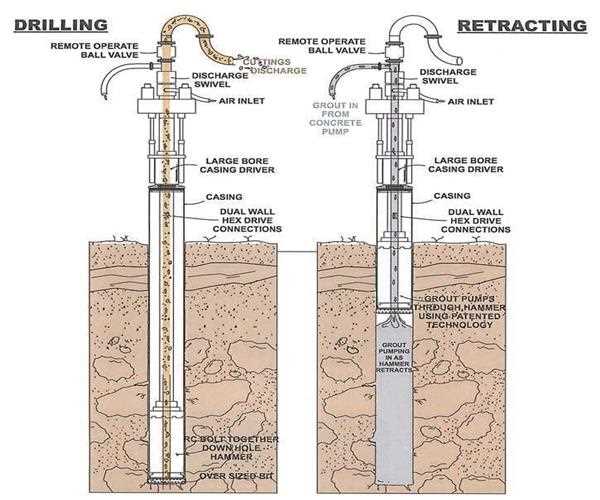The reverse boring concept (RBC) is a machining technique used in the manufacturing industry. It is a process of machining a hole or cylindrical feature from the solid end of the workpiece toward the center instead of drilling or boring from the center towards the end. This technique is also known as back boring or boring from the back.
The RBC technique is used when traditional boring or drilling methods are not possible or inefficient. It is commonly used in machining operations for deep and narrow bores with a high length-to-diameter ratio. In such situations, the RBC technique can significantly improve the machining process's efficiency, reduce cycle time, and improve the quality of the machined parts.

The RBC technique uses a specially designed tool with a cutting edge on its reverse side. The tool is inserted into the workpiece from the backside, and the cutting edge removes material as it travels toward the center of the hole. The tool's design allows it to cut in reverse, with the cutting edge moving in the opposite direction to the spindle rotation. This produces a smooth, precise bore with excellent dimensional accuracy and surface finish.
The RBC technique is particularly useful in applications where the workpiece has a limited opening, making it difficult to access the interior for drilling or boring. The RBC tool's design allows it to reach deep into the workpiece, even in small openings, to create bores with high accuracy and precision.
The RBC technique is also useful in applications where the workpiece material is difficult to machine, such as hardened steel, titanium, or other exotic alloys. Traditional drilling or boring methods may not be efficient or effective in such materials, but the RBC technique can produce high-quality bores with minimal effort.
One of the main advantages of the RBC technique is its ability to produce bores with high accuracy and precision. The tool's design ensures that the bore is concentric with the workpiece's outer diameter, resulting in a high-quality bore with excellent surface finish and dimensional accuracy. This accuracy and precision are essential in applications where the bore's size and position are critical, such as in the aerospace, medical, or automotive industries.
Another advantage of the RBC technique is its ability to reduce cycle time and improve efficiency. Traditional drilling or boring methods may require multiple passes to achieve the desired bore size, resulting in longer cycle times and higher production costs. The RBC technique can achieve the desired bore size in a single pass, reducing cycle time and improving productivity.
The RBC technique is also more versatile than traditional boring or drilling methods. It can be used in various materials, including metals, plastics, and composites. This versatility makes it an ideal machining technique for various applications and industries.
In conclusion, the reverse boring concept is a machining technique that involves machining a hole or cylindrical feature from the solid end of the workpiece towards the center. It is a versatile and efficient technique that can produce high-quality bores with excellent dimensional accuracy and surface finish. The RBC technique is particularly useful in applications where traditional boring or drilling methods are impossible or inefficient. Its ability to reduce cycle time and improve efficiency makes it an ideal machining technique for various applications and industries.
